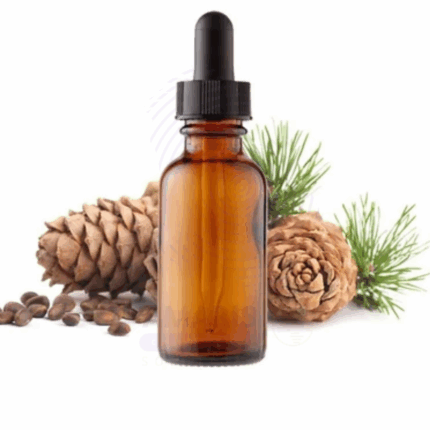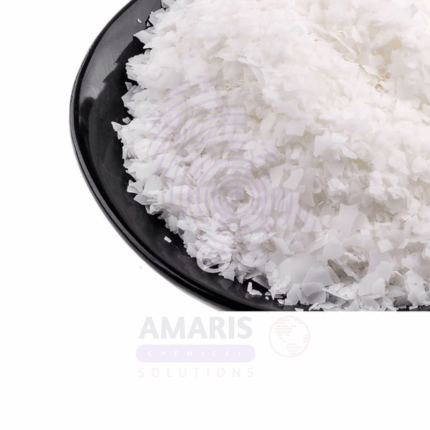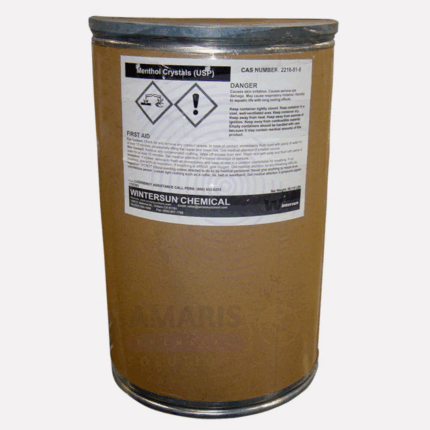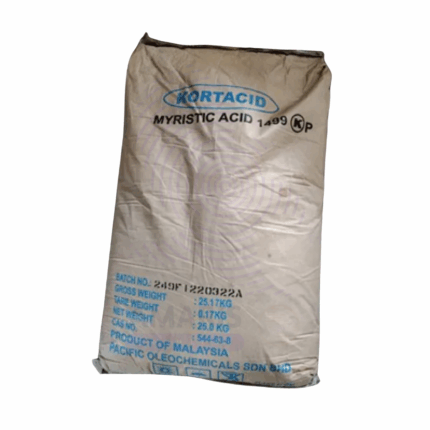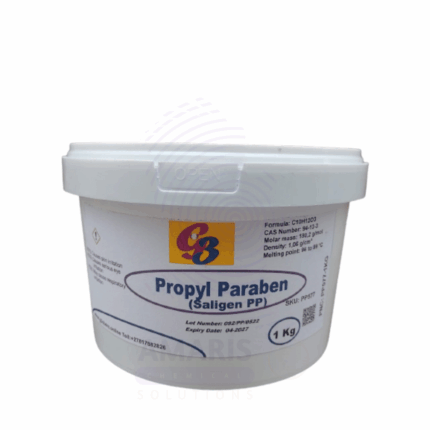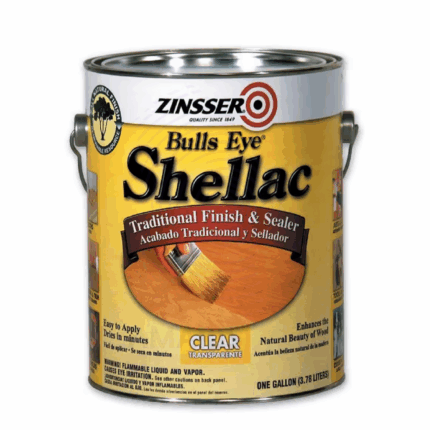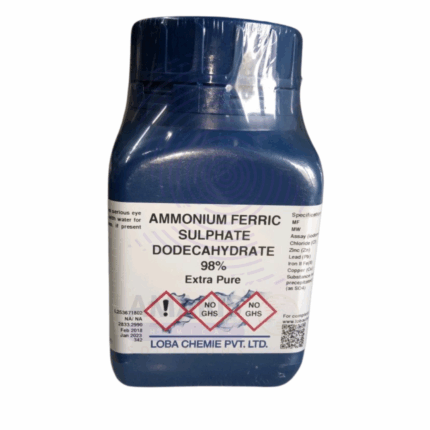
Ammonium Ferric Sulphate Extra Pure
$ 18.00 Original price was: $ 18.00.$ 17.45Current price is: $ 17.45.
Natural Beta carotene food grade
Whatsapp Order
Natural Beta Carotene Food Grade is a naturally derived carotenoid pigment obtained from sources such as algae, carrots, palm oil, and other vegetables. It is a powerful antioxidant and a precursor to vitamin A (provitamin A), essential for human health. This bright orange-red pigment is widely used as a natural colorant in food, beverages, dietary supplements, and cosmetics. Its antioxidant properties help protect cells from oxidative damage, supporting immune function, eye health, and skin vitality.
Categories: Antioxidants(cosmetic), Colorants(food), COSMETIC AND PERSONAL CARE CHEMICALS, FOOD AND BEVERAGE CHEMICALS, Nutraceutical Ingredients (food), Nutraceutical Ingredients (pharmaceutical), PHARMACEUTICAL CHEMICALS
Tags: Antioxidant, Beta Carotene Food Grade, Natural Beta Carotene, Natural Colorant, Nutraceuticals
Description
Table of Contents
Toggle
Primary Uses
- Food Industry
- Used as a natural colorant to impart an orange to red hue in dairy products, beverages, baked goods, snacks, and confectionery.
- Acts as a nutritional supplement ingredient to provide provitamin A.
- Added to margarine and cooking oils for vitamin A enrichment.
- Dietary Supplements
- Used in capsules, tablets, and soft gels as a natural source of vitamin A precursor and antioxidant.
- Promotes immune system support and skin health.
- Cosmetics and Personal Care
- Incorporated in skincare products for its antioxidant benefits and natural coloring.
- Used in lipsticks, creams, and lotions for pigmentation and skin nourishment.
Secondary Uses
- Animal Feed
- Added to poultry and fish feed to enhance pigmentation and improve animal health.
- Pharmaceuticals
- Used in formulations targeting eye health and immune support.
- Beverage Industry
Employed as a natural colorant in fruit juices, energy drinks, and fortified waters.
KEY PRODUCT FEATURES
Basic Identification Attributes
- Chemical Name (IUPAC): Beta-Carotene
- Common/Trade Name: Natural Beta Carotene Food Grade
- CAS Number: 7235-40-7
- HS Code: 3204.17.00
- Synonyms: Provitamin A, E160a
Physical & Chemical Properties
- Physical State: Fine powder or crystalline solid
- Color & Odor: Bright orange-red; mild characteristic odor
- Solubility: Insoluble in water; soluble in fats, oils, and organic solvents
- Melting Point: 176–180°C
- Stability: Sensitive to light, heat, and oxygen (store under inert atmosphere recommended)
Safety & Hazard Attributes
- GHS Classification: Not classified as hazardous
- Toxicity: Non-toxic; safe for food and cosmetic use at approved levels
- Exposure Limits: No specific occupational exposure limits
Storage & Handling Attributes
- Storage Conditions: Store in cool, dark, airtight containers away from heat, light, and oxygen
- Container Type: Supplied in sealed, opaque containers or bags
- Shelf Life: Typically 2 years if stored properly
- Handling Precautions: Avoid inhalation of dust; minimize exposure to air and light
Regulatory & Compliance Attributes
- Complies with FDA food additive regulations
- Meets standards of the Codex Alimentarius and EU food regulations
- GRAS (Generally Recognized As Safe) status
- Suitable for vegetarian and vegan products
Environmental & Health Impact
- Biodegradability: Biodegradable
- Ecotoxicity: Low environmental impact when used as directed
- Bioaccumulation: Not expected to bioaccumulate
Carcinogenicity/Mutagenicity: Not classified as hazardous
SAFETY HANDLING PRECAUTIONS
Safety Handling Precautions
- PPE Required: Gloves and dust mask recommended when handling powder
- Handling Guidelines: Use in well-ventilated areas; avoid dust formation
- Storage Measures: Keep containers tightly sealed; protect from light and heat
First Aid Measures
- Inhalation: Move to fresh air if irritation occurs
- Skin Contact: Wash with soap and water
- Eye Contact: Rinse eyes with plenty of water; seek medical attention if irritation persists
- Ingestion: Rinse mouth; seek medical advice if large quantities ingested
Firefighting Measures
- Fire Hazards: Combustible organic powder
- Extinguishing Media: Use water spray, foam, dry chemical, or CO₂ extinguishers
- Special Precautions: Avoid dust cloud formation which can be explosive
- Hazardous Combustion Products: Carbon oxides and other organic combustion products
Related products
Almond Wax
Almond Wax is a natural, plant-based wax derived from the hydrogenation of almond oil (Prunus amygdalus dulcis). It is a creamy to white, semi-solid wax with a mild, nutty scent and excellent emollient properties. Almond Wax is rich in fatty acids and has a smooth, soft texture, making it ideal for use in cosmetic, personal care, and candle formulations.
Due to its gentle consistency, skin-friendly profile, and moisturizing capabilities, Almond Wax is widely used in body butters, balms, lip care products, massage bars, and artisan soaps. It functions as a natural alternative to petroleum-based waxes and provides structure, viscosity, and glide to formulations. It also finds application in soft wax blends for natural candle products.
Liquid berries flavor food grade
Liquid Berries Flavor (Food Grade) is a high-quality, concentrated flavoring designed to capture the vibrant and sweet aroma of mixed berries. This versatile liquid flavor is ideal for use in beverages, confectionery, dairy products, and various food applications requiring a natural and authentic berry taste. It offers excellent solubility, stability, and a long shelf life, ensuring consistent flavor delivery in both cold and hot processed products. Its rich berry profile enhances the sensory appeal of products, making it a preferred choice for manufacturers aiming to provide fruity freshness.
Liquid mango flavor food grade
Liquid Mango Flavor (Food Grade) is a vibrant, tropical flavoring designed to capture the sweet, juicy essence of ripe mangoes. This flavor is widely utilized in the food and beverage industry to enhance the sensory profile of products such as beverages, confectionery, dairy, and baked goods. It offers excellent solubility in both aqueous and alcoholic solutions, making it versatile for a range of applications. The authentic and fresh mango aroma helps manufacturers deliver high-quality products that satisfy consumer demand for exotic and fruity tastes.
Menthol crystals
Menthol Crystals are natural organic compounds derived from peppermint or other mint oils, presenting as clear or white crystalline solids with a strong, cooling mint aroma. They possess analgesic, antiseptic, and flavoring properties. Widely used in pharmaceuticals, cosmetics, food, and personal care products, menthol crystals provide a refreshing cooling sensation and fragrance, enhancing product efficacy and consumer appeal.
Mono Ethanol Amine
Mono Ethanol Amine (MEA) is a clear, colorless, hygroscopic liquid with an ammonia-like odor. It is an organic chemical compound combining both amine and alcohol functional groups. MEA is widely used as a versatile chemical intermediate and is especially important in gas treatment, detergents, and chemical manufacturing due to its alkalinity and solubility in water and organic solvents.
Myristic Acid
Myristic Acid is a saturated fatty acid with a 14-carbon chain, naturally found in nutmeg, coconut oil, palm kernel oil, and butter fat. It appears as a white crystalline solid with a faint odor. It is widely used in the manufacture of soaps, cosmetics, surfactants, and food additives due to its emollient and cleansing properties. Myristic Acid acts as a key intermediate in the production of esters, detergents, and lubricants.
Propyl paraben
Propyl Paraben is a widely used preservative belonging to the paraben family, known for its antimicrobial properties. It is commonly employed to inhibit the growth of bacteria, mold, and yeast in cosmetic, pharmaceutical, and food products. Propyl Paraben is favored for its effectiveness, low toxicity, and compatibility with a broad range of formulations, helping extend product shelf life while maintaining safety.
Shellac
Shellac is a natural resin secreted by the lac insect, primarily found in South Asia. It is processed into flakes or powder form and dissolved in alcohol to create a versatile film-forming agent. Shellac provides excellent adhesion, gloss, and moisture resistance, making it widely used as a wood finish, food glaze, and pharmaceutical coating. It is valued for its natural origin, biodegradability, and safe use in food and cosmetic applications.


 Preservatives(food)
Preservatives(food) Flavor Enhancers
Flavor Enhancers Acidulants
Acidulants Sweeteners
Sweeteners Antioxidants
Antioxidants Colorants(food)
Colorants(food) Nutraceutical Ingredients (food)
Nutraceutical Ingredients (food) Nutrient Supplements
Nutrient Supplements Emulsifiers
Emulsifiers
 Collectors
Collectors Dust Suppressants
Dust Suppressants Explosives and Blasting Agents
Explosives and Blasting Agents Flocculants and Coagulants
Flocculants and Coagulants Frothers
Frothers Leaching Agents
Leaching Agents pH Modifiers
pH Modifiers Precious Metal Extraction Agents
Precious Metal Extraction Agents
 Antioxidants(plastic)
Antioxidants(plastic) Colorants (Pigments, Dyes)
Colorants (Pigments, Dyes) Fillers and Reinforcements
Fillers and Reinforcements Flame Retardants
Flame Retardants Monomers
Monomers Plasticizers
Plasticizers Polymerization Initiators
Polymerization Initiators Stabilizers (UV, Heat)
Stabilizers (UV, Heat)
 Antifoaming Agents
Antifoaming Agents Chelating Agents
Chelating Agents Coagulants and Flocculants
Coagulants and Flocculants Corrosion Inhibitors
Corrosion Inhibitors Disinfectants and Biocides
Disinfectants and Biocides Oxidizing Agents
Oxidizing Agents pH Adjusters
pH Adjusters Scale Inhibitors( water)
Scale Inhibitors( water)
 Antioxidants(cosmetic)
Antioxidants(cosmetic) Emollients
Emollients Fragrances and Essential Oils
Fragrances and Essential Oils Humectants
Humectants Preservatives
Preservatives Surfactants(cosmetic)
Surfactants(cosmetic) Thickeners
Thickeners UV Filters
UV Filters
 Fertilizers
Fertilizers Soil Conditioners
Soil Conditioners Plant Growth Regulators
Plant Growth Regulators Animal Feed Additives
Animal Feed Additives Biostimulants
Biostimulants Pesticides (Herbicides, Insecticides, Fungicides)
Pesticides (Herbicides, Insecticides, Fungicides)
 Active Pharmaceutical Ingredients (APIs)
Active Pharmaceutical Ingredients (APIs) Excipients
Excipients Solvents(pharmaceutical)
Solvents(pharmaceutical) Antibiotics
Antibiotics Antiseptics and Disinfectants
Antiseptics and Disinfectants Vaccine Adjuvants
Vaccine Adjuvants Nutraceutical Ingredients (pharmaceutical)
Nutraceutical Ingredients (pharmaceutical) Analgesics & Antipyretics
Analgesics & Antipyretics
 Analytical Reagents
Analytical Reagents Solvents(lab)
Solvents(lab) Chromatography Chemicals
Chromatography Chemicals Spectroscopy Reagents
Spectroscopy Reagents microbiology-and-cell-culture-reagents
microbiology-and-cell-culture-reagents Molecular Biology Reagents
Molecular Biology Reagents Biochemical Reagents
Biochemical Reagents Inorganic and Organic Standards
Inorganic and Organic Standards Laboratory Safety Chemicals
Laboratory Safety Chemicals Specialty Laboratory Chemicals(Special Laboratory Equipment)
Specialty Laboratory Chemicals(Special Laboratory Equipment)
 Demulsifiers
Demulsifiers Hydraulic Fracturing Fluids
Hydraulic Fracturing Fluids Scale Inhibitors(oil)
Scale Inhibitors(oil) Surfactants(oil)
Surfactants(oil) Drilling Fluids
Drilling Fluids
 Dyes and Pigments
Dyes and Pigments Bleaching Agents
Bleaching Agents Softening Agents
Softening Agents Finishing Agents
Finishing Agents Antistatic Agents
Antistatic Agents
 Admixtures
Admixtures Waterproofing Agents
Waterproofing Agents Sealants and Adhesives
Sealants and Adhesives Curing Compounds
Curing Compounds Concrete Repair Chemicals
Concrete Repair Chemicals Anti-Corrosion Coatings
Anti-Corrosion Coatings
 Surfactants(cleaning)
Surfactants(cleaning) Builders
Builders Enzymes
Enzymes Solvents (Cleaning)
Solvents (Cleaning) Fragrances
Fragrances
 Electronic Chemicals
Electronic Chemicals Catalysts
Catalysts Lubricants
Lubricants Photographic Chemicals
Photographic Chemicals Refrigerants
Refrigerants Automotive chemicals
Automotive chemicals Pyrotechnic Chemicals
Pyrotechnic Chemicals
 Biodegradable Surfactants
Biodegradable Surfactants Bio-based Solvents
Bio-based Solvents Renewable Polymers
Renewable Polymers Carbon Capture Chemicals
Carbon Capture Chemicals Wastewater Treatment Chemicals
Wastewater Treatment Chemicals
 Pigments
Pigments Solvents(paint)
Solvents(paint) Specialty Coatings
Specialty Coatings Binders/Resins
Binders/Resins Additives
Additives Driers
Driers Anti-Corrosion Agents
Anti-Corrosion Agents Functional Coatings
Functional Coatings Application-Specific Coatings
Application-Specific Coatings
 Fresh Herbs
Fresh Herbs Ground Spices
Ground Spices Whole Spices
Whole Spices Spice Blends
Spice Blends Dried Herbs
Dried Herbs
 Leavening Agents
Leavening Agents Dough Conditioners
Dough Conditioners Flour Treatments
Flour Treatments Fat Replacers
Fat Replacers Decoratives
Decoratives Preservatives(baking)
Preservatives(baking)
 Plasticizers & Softeners
Plasticizers & Softeners Reinforcing Agents
Reinforcing Agents Adhesion Promoters
Adhesion Promoters Vulcanizing Agents
Vulcanizing Agents Antidegradants
Antidegradants Blowing Agents
Blowing Agents Fillers & Extenders
Fillers & Extenders Accelerators & Retarders
Accelerators & Retarders
